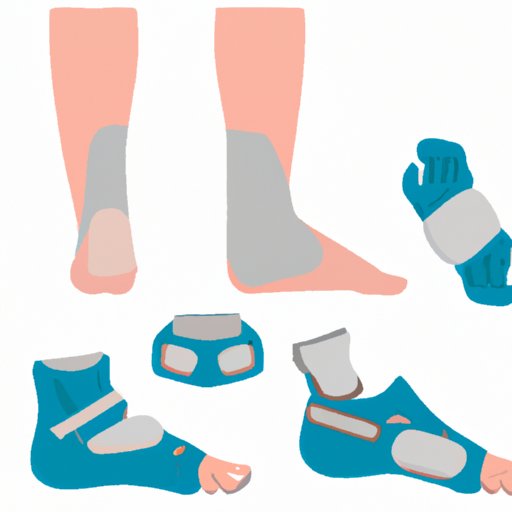
Introduction
If you’re an active person or an athlete, you may have experienced the sharp, shooting pain that runs along the front of your lower leg: shin splints. Shin splints are a type of pain that occurs when the muscles around your shinbone become inflamed and irritated. While anyone can develop shin splints, they are particularly common among runners, dancers, and other athletes who engage in high-impact activities.
Identifying the causes of shin splints is crucial to preventing this recurring injury. This article will explore the various factors that can contribute to shin splints and suggest practical strategies to help you avoid them.
Causes of Shin Splints: Understanding the Anatomy and Mechanics Involved
Shin splints are typically caused by excessive or repetitive force on the shinbone and surrounding muscles. When you engage in activities that involve a lot of running, jumping, or other high-impact motions, you are placing increased stress on your lower legs. The muscles around your shinbone may become fatigued, leading to inflammation and pain.
Additionally, anatomical factors such as flat feet or weak ankles can contribute to the development of shin splints. Understanding the anatomy and mechanics involved in the development of shin splints can help you prevent and treat the condition.
Training Errors that Can Lead to Shin Splints and How to Avoid Them
Training errors are another common cause of shin splints. For example, overtraining, improper technique, and lack of warm-up can all contribute to shin splint pain.
One key strategy to avoid training errors is to gradually increase your activity levels over time. This approach will give your body time to adapt to the increased stress and help prevent injury. Additionally, make sure to always warm up adequately before engaging in high-impact activities and pay close attention to your technique to ensure proper form.
Footwear and Shin Splints: Are Your Shoes Causing You Pain?
The right footwear can make a big difference in preventing shin splints. Shoes that provide proper support and cushioning can help absorb the impact of high-impact activities. Conversely, shoes that are worn out, too tight, or don’t fit properly can contribute to the development of shin splints.
If you suspect that your shoes may be contributing to your shin splints, consider investing in a new pair that provides the right support for your feet. Look for shoes that have a flexible sole, good arch support, and cushioning in the heel and midfoot.
The Role of Nutrition and Hydration in the Development of Shin Splints
Good nutrition and hydration are crucial to preventing shin splints. When you don’t provide your body with the nutrients it needs to function properly, you increase your risk of injury.
One key nutrient for preventing shin splints is calcium, which is important for bone health. Foods such as dairy products, leafy green vegetables, and fish provide calcium. Additionally, staying hydrated by drinking plenty of water can help prevent muscle fatigue and reduce your risk of injury.
Common Risk Factors for Shin Splints and Strategies for Prevention
There are several individual factors that can increase your risk of developing shin splints, such as having flat feet or engaging in high-impact exercises. Understanding your personal risk factors is key to preventing injury.
If you have flat feet or high arches, consider wearing orthotics or using arch support. Additionally, switching to lower-impact activities such as swimming, biking, or using an elliptical machine can help reduce your risk of shin splints.
Treatment Options for Shin Splints: What Works and What Doesn’t
If you do end up developing shin splints, rest is typically the best course of action. Ice, compression, and elevation can also help reduce pain and inflammation. Over-the-counter pain relief medications such as ibuprofen or acetaminophen may also be helpful in managing symptoms.
Alternative treatments such as acupuncture and massage therapy have also been shown to be effective in reducing pain and inflammation associated with shin splints.
Conclusion
Shin splints can be a frustrating and painful injury, but there are many strategies you can use to prevent and treat them. By understanding the anatomy, mechanics, and risk factors involved, you can take steps to avoid injury and stay active. If you do experience shin splints, rest and proper treatment are crucial to a full recovery. Don’t hesitate to seek medical advice if symptoms persist. With the right approach, you can overcome shin splints and continue pursuing your athletic goals.





